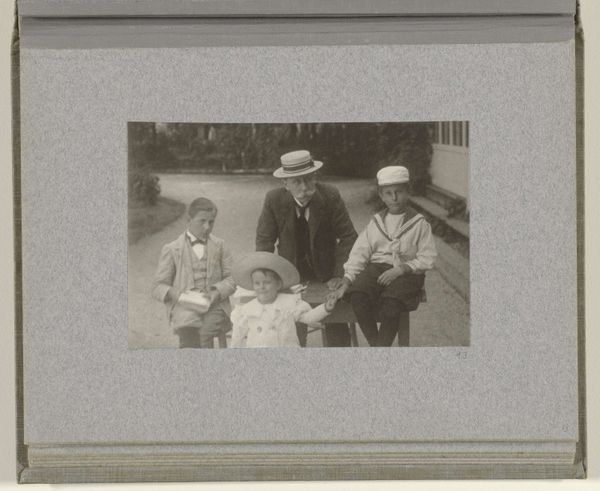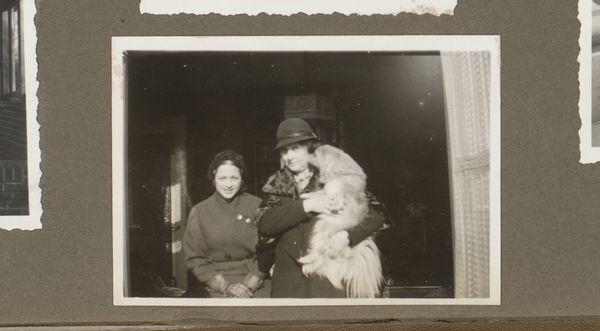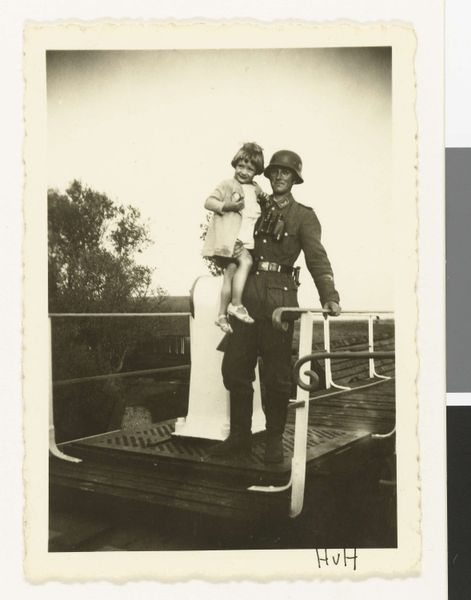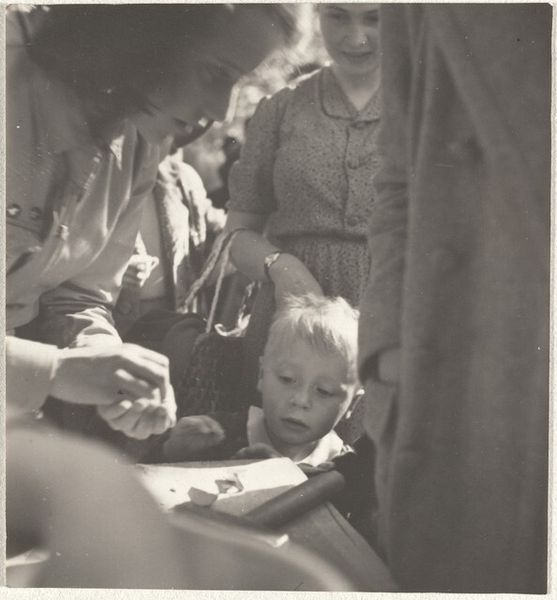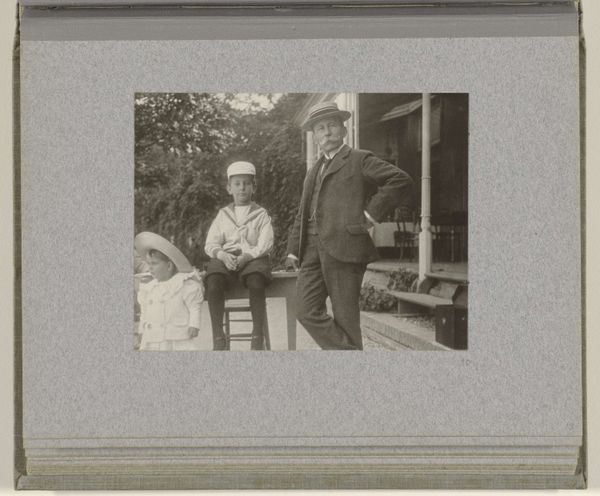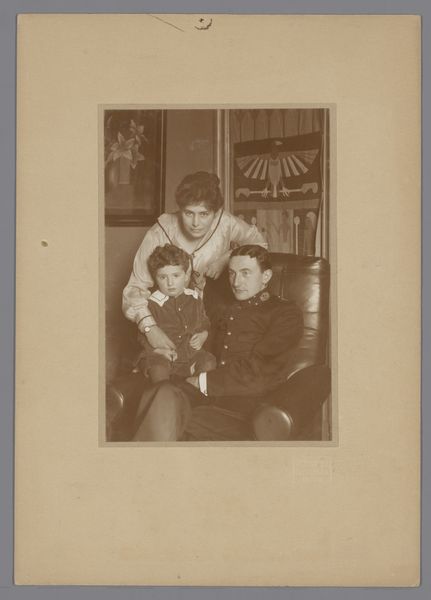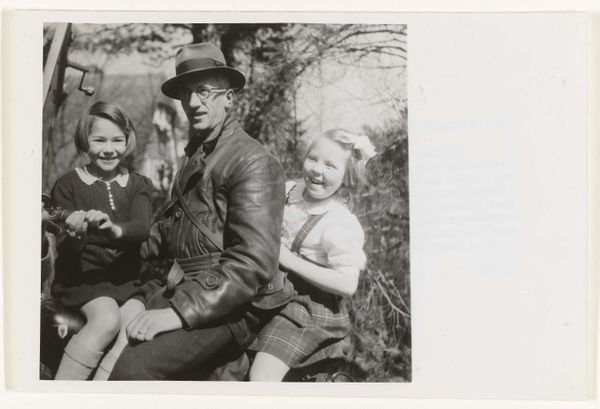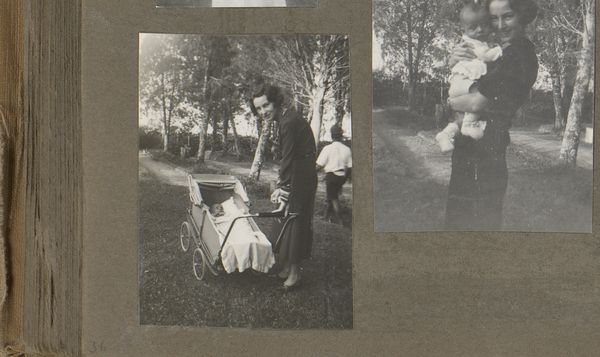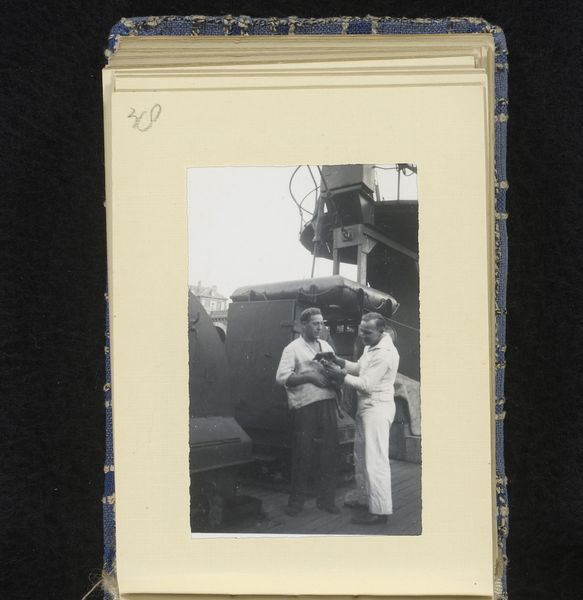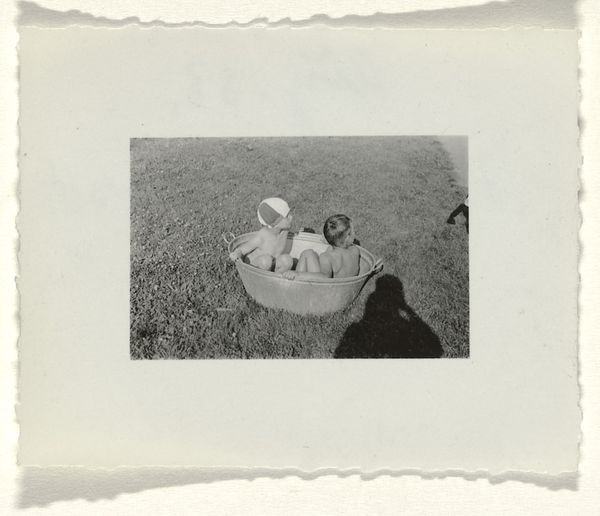
Copyright: National Gallery of Art: CC0 1.0
Editor: We're looking at Robert Frank's gelatin-silver print, "Peru, page 5" from 1948. It's a striking portrait, and I’m really drawn to the contrast between the textures of the clothing and the natural backdrop. What stands out to you about this work? Curator: I am drawn to the formal elements that structure this photograph. The use of light and shadow carves out planes in a way that adds considerable depth to this gelatin print, does it not? I think of semiotics; the hats that adorn the subjects establish a framework and communicate the context for the photograph as much as their faces do. Are you seeing something similar? Editor: Yes, I think that's insightful. The hats definitely ground the image and bring to the forefront a specific cultural moment. There is a softness to the clothing versus the sharpness of the shadows, the hats as a symbol juxtapose hard/soft notions here. I also noticed the picture looks like it comes out of a binder. Any thoughts why it includes the binder as a component? Curator: It adds a critical meta-layer. We must think, is this inclusion random or a very important gesture? What is this image attached to? I believe there is a conceptual framing element. Its material form gives added structure and invites considerations of how this work may connect to ideas about image, object, and meaning in Post-Impressionism. Editor: This discussion has highlighted a very new way of approaching the work. Thinking of the image as a visual marker, alongside the material and meaning, will shift how I analyze photographs from now on! Curator: Precisely. And focusing on formal elements will give you deeper access into more varied perspectives.
Comments
No comments
Be the first to comment and join the conversation on the ultimate creative platform.
